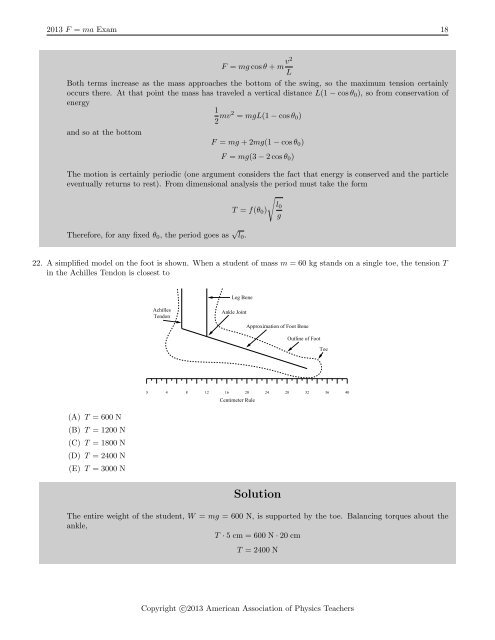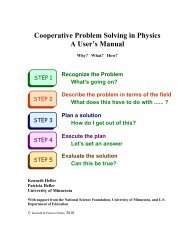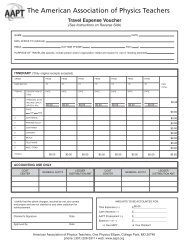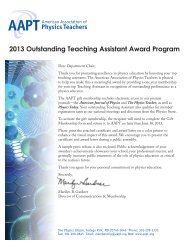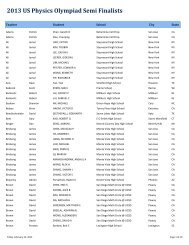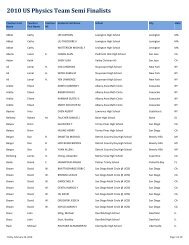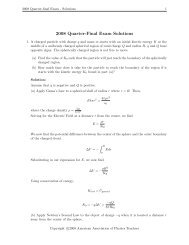Solution - American Association of Physics Teachers
Solution - American Association of Physics Teachers
Solution - American Association of Physics Teachers
You also want an ePaper? Increase the reach of your titles
YUMPU automatically turns print PDFs into web optimized ePapers that Google loves.
2013 F = ma Exam 18F = mg cos θ + m v2LBoth terms increase as the mass approaches the bottom <strong>of</strong> the swing, so the maximum tension certainlyoccurs there. At that point the mass has traveled a vertical distance L(1 − cos θ 0 ), so from conservation <strong>of</strong>energy12 mv2 = mgL(1 − cos θ 0 )and so at the bottomF = mg + 2mg(1 − cos θ 0 )F = mg(3 − 2 cos θ 0 )The motion is certainly periodic (one argument considers the fact that energy is conserved and the particleeventually returns to rest). From dimensional analysis the period must take the form√T = f(θ 0 )l 0gTherefore, for any fixed θ 0 , the period goes as √ l 0 .22. A simplified model on the foot is shown. When a student <strong>of</strong> mass m = 60 kg stands on a single toe, the tension Tin the Achilles Tendon is closest toLeg BoneAchillesTendonAnkle JointApproximation <strong>of</strong> Foot BoneOutline <strong>of</strong> FootToe0 4 8 12 16 20 24 28 32 36 40Centimeter Rule(A) T = 600 N(B) T = 1200 N(C) T = 1800 N(D) T = 2400 N(E) T = 3000 N<strong>Solution</strong>The entire weight <strong>of</strong> the student, W = mg = 600 N, is supported by the toe. Balancing torques about theankle,T · 5 cm = 600 N · 20 cmT = 2400 NCopyright c○2013 <strong>American</strong> <strong>Association</strong> <strong>of</strong> <strong>Physics</strong> <strong>Teachers</strong>


